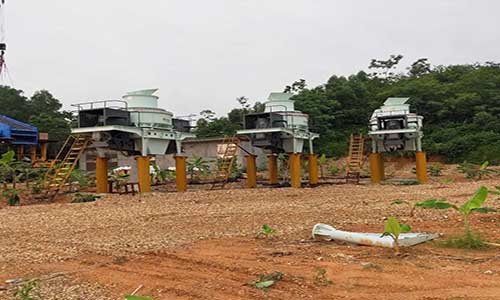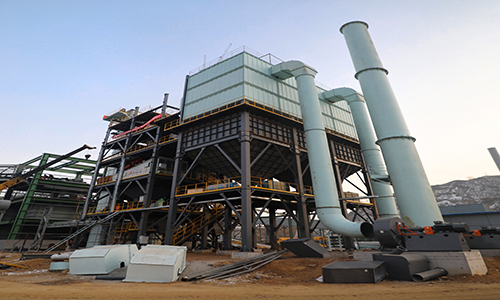اترك رسالة

Belt Conveyor, Classification of SpringerLink
The belt conveyor can work in the range of temperature 20–40 °C and can transport all kinds of bulk materials with temperatures lower than 60 °C, such as fine powder, chemicals, ore, coal, etc, as well as sets of wares The belt conveyor can be

Chain Conveyor vs Belt vs Roller: Top Applications and Pitfalls
Belt conveyors are usually driven and can be operated at multiple speeds, depending on the throughput required The conveyors can be inclined or

What’s the Difference Between Conveyor Systems?
We review eight types of conveyor systems to better understand the pros and cons of each

Should I use a Screw Conveyor or Belt Conveyor??
Belt conveyors are somewhat modular, at least the idlers and pulleys are, but the frames are all custom designed and specifically built for each application meaning there will always be more costs Need a
Roller Conveyor vs Belt Conveyor, which one is better?
One thing to consider however is that sharp or extremely heavy items may cause damage to the belt Very heavy items may also cause problems for a standard belt conveyor and whilst heavyduty belts are available, for

Belt Conveyor Vs Live Roller Conveyor Conveyor Systems
A roller conveyor consists mainly of solid, tubeshaped rollers, which directly contact and transfer motion to the materials that they transport These rollers may be steel or composite tubing Some roller systems are gravitypowered, but live roller conveyors rely on a motor A belt conveyor, on the other hand, has a single, flat steel or
When to Use Belt Conveyor vs Live Roller Conveyor
Live roller conveyor is comprised of steel rollers that are in direct contact with the product It’s a powered solution which is either beltdriven or chaindriven to provide roller rotation Commonly used for solid, stable and heavier products Boxes, cartons and heavy duty pallets all are appropriate materials for live roller conveyor

Belt Conveyors vs Screw Conveyors in Wastewater Plants JMS
Less bearings than a belt conveyor Can convey vertically Used in hopper live bottom applications Cons Stringy material may rag on shafts or hanger bearings Shearing action may change sludge Screw Conveyors for Municipal Wastewater Plants are typically made by Jim Myers & Sons, Inc,Spirac,Custom Conveyor Corporation,JDV
Belt Conveyor Vs Roller Conveyor Mana Yang Lebih Baik?
Roller Conveyor Melengkung Kita tahu bahwa belt conveyor dapat memuat berbagai macam jenis material dan dapat mengontrol material tersebut lebih baik dibandingkan dengan roller conveyor Ketika posisi dan arah dari sebuah material merupakan hal yang penting, maka belt conveyor merupakan pilihan yang lebih tepat

AGV robot vs belt conveyor in warehouses, sorting plants,
Roller conveyors, AGV (Automated Guided Vehicles) robots and AMRs (Autonomous Mobile Robots), or fleets of selfdriving forklifts are almost standard sights, especially in warehouses owned by large companies with international reach Automated Guided Vehicle robots are often combined with conveyor belts and monorail systems

Modular Plastic Belt Conveyors: Pros, Cons, and Top Alternatives
As the name indicates, a modular belt conveyor is a flat belt conveyor that comprises individual, long, and narrow steel or plastic modules that are usually connected together using joint rods to create a continuous belt Based on the style, a usual 2feet to 50feet belt uses 600 to 4000 modules

Conveyor Type: Belt or Roller? CiscoEagle
Typically loads like bags, envelopes, small parts, components, fabric and cartons with irregular bottoms Anything that can’t travel on rollers is a candidate for belt conveying Belts are much more forgiving on poor loads than rollers, which can drop small items or allow them to tilt between rollers When you convey vertically
Belt Conveyors: Components, Types, Design, and Applications
For applications that may require the “unorthodox” width greater than the length, type of conveyor, modular belt conveyors will achieve that feat much easier Since they are nonmetallic, easy to clean, and porous to gas and liquids, modular belt conveyors can be applied in: Food handling Fluid handling
Roller Conveyor vs Belt Conveyor CSL
Both systems can include bends, will integrate with merges, and have stand by modes, however there are features that are exclusive to one type or the other Standard belt conveyors are more suitable for small or irregular items, inclines and declines than roller conveyors, whereas only roller conveyors can be easily modded or added

Bucket Elevators Vs Belt Conveyors: What Is The Difference?
The terms 'elevator' and 'conveyor' are different in design and function The most notable characteristic of a bucket elevator is that it features multiple sets of upwardfacing buckets to move products in a vertical trajectory These machines are powered by motored drives normally utilising chains made from steel or plastic, for example

Conveyors Capacities The Engineering ToolBox
Typical Conveyor Capacity 1 in = 254 mm 1 ft3/h = 0028 m3/h 1 ft/min = 508 x 103 m/s The product cross sectional area is defined by the idler trough shape and the product pile on top of the idler trough the trapezoid
Conveying Comparison Between Belt Conveyors and Screw Conveyors
Both conveyors have their advantages and disadvantages in terms of handling bulk materials, so the decision lies in the specifics of the equipment that you would transport If you want to carry heavy stuff to a distant place in a faster and more affordable way, choose belt conveyors Meanwhile, in handling hazardous substances, choose
Belt Conveyors or Roller Conveyors which one is best?
In many cases, conveyor systems will be a mix of belts and rollers at different points to create the maximum product control and most efficient flow Advance is always available to assist with the specification and design process Contact us today on 01325 328 930, : Published: 28th January 2020

Materials conveyors: A guide for specifying belt conveyor systems
The first step in the design of a belt conveyor with a specified conveyor capacity is to determine the speed and width of the belt The magnitude of the belt speed can be determined using: equation Where: C = Conveyor capacity r = Material density (kg/m3) V = Belt speed (m/s) A = Conveyor’s belt crosssectional area

Pengertian Conveyor Dan Beberapa Spesifikasinya PT
Macammacam conveyor Berikut adalah kualifikasi dari beberapa jenis spesifikasi conveyor yang sering digunakan antara lain: 1 Roller conveyor a Pengertian roller conveyor Merupakan spesifikasi dari conveyor yang menggunakan roller untuk mengangkut barang Dalam perpindahannya, roller conveyor memanfaatkan gaya
The Difference Between Conveyor Belts and Chain Conveyors
Advantages Chain conveyors are more durable than belts, making them the preferred choice for heavier loads However, they have a high chance of causing damage Also, since chain conveyors are made from a series of interlocking chains, they’re easier to fix than their counterpart This is because everything is designed in one piece

Conveyor vs Belt What's the difference? WikiDiff
As nouns the difference between conveyor and belt is that conveyor is a person that conveys, transports or delivers while belt is a band worn around the waist to hold clothing to one's body (usually pants), hold weapons (such as a gun or sword), or serve as a decorative piece of clothing